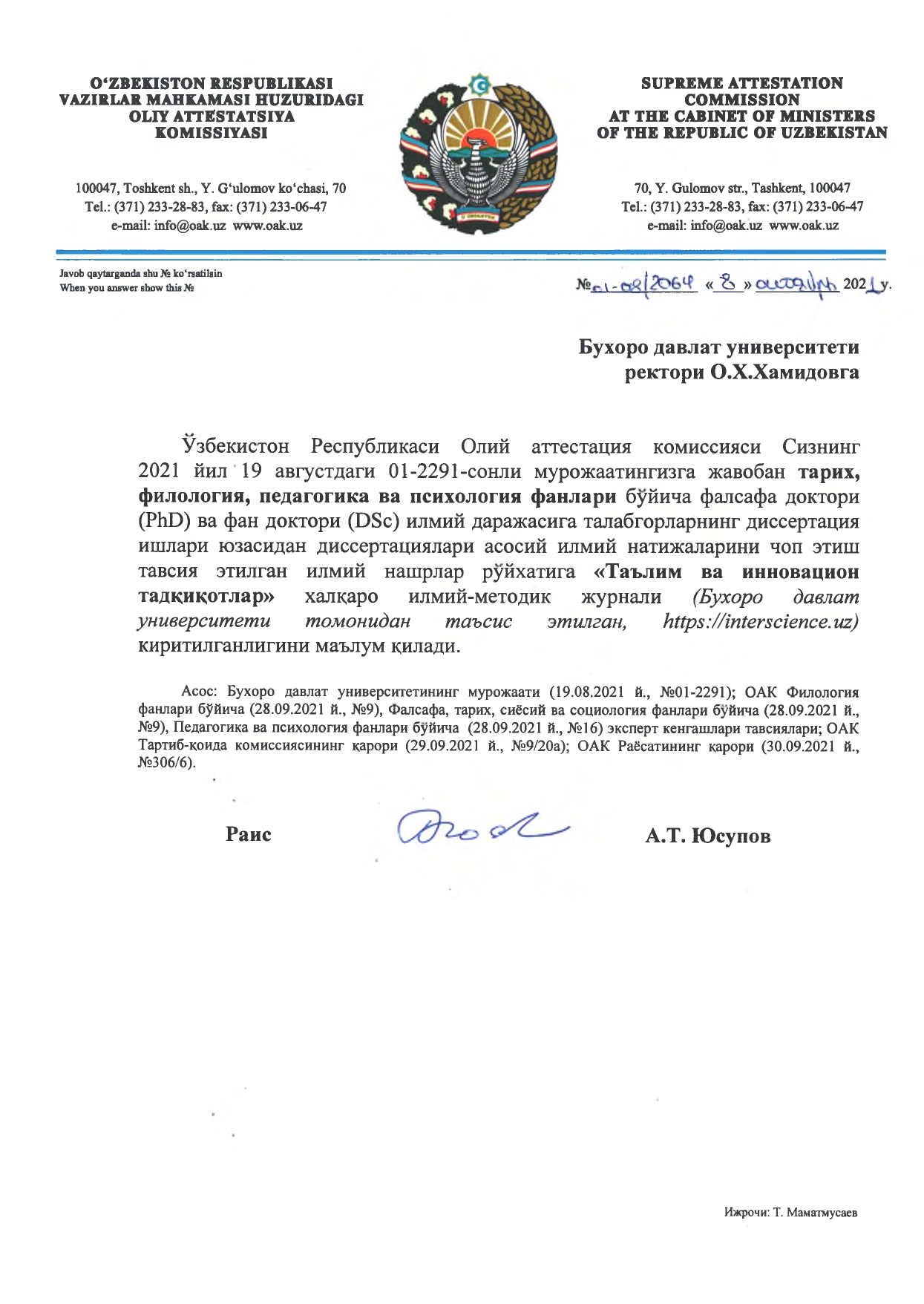INGLIZ TILINI CHET TILI SIFATIDA O ‘RGANUVCHILAR UCHUN TURLI O ‘QITISH USULLARINI TADQIQ ETISH
Sobirova Asilabonu, O‘zbekiston davlat jahon tillari universiteti 3-Ingliz tili fakulteti talabasi
Ключевые слова:
til o’rganuvchilar, o‘quv muhiti, “To‘g‘ridan-to‘g‘ri usul”, “Grammatika tarjima qilish usuli”, “Aralash o‘rganish”, “To‘liq jismoniy javob”, “Tinch usul”, “Suggestopedia”, “Eshitish usuli”.Аннотация
Ushbu tadqiqot kutubxona tadqiqoti metodologiyasidan foydalangan holda ingliz tilini chet tili sifatida o‘qitishning turli yondashuvlarini o‘rganishga bag‘ishlangan. U nufuzli milliy va xalqaro jurnallardan olingan malumotlarni o‘z ichiga oladi, keyinchalik ular sifat jihatidan tahlil ham qilinadi. Natijalar talabalar va ustozlar uchun ta’lim strategiyalarining samaradorligini ta’minlaydi. Ushbu usullar talabalarni raqamli va globallashgan dunyoda muvaffaqiyatga erishish uchun zarur bo‘lgan ko‘nikmalar bilan ta’minlashga qaratilgan. Shunisi e’tiborga loyiqki, ular tilni o‘zlashtirishda turli xil afzalliklarni taklif qiladi. Ko‘p qo‘llaniladigan strategiyalar “To‘g‘ridan-to‘g‘ri usul”, “Grammatika tarjima qilish usuli”, “Aralash o‘rganish”, “To‘liq jismoniy javob”, “Tinch usul”, “Suggestopedia”, “Eshitish usuli”larni o‘z ichiga oladi.
Библиографические ссылки
https://lex.uz/docs/-5431845 Brooker, D. (2018). English for development: A review of research into the role of English as a driver for socioeconomic development. UCLES.
Richards, J.C., & Rodgers, T.S. (2001). Approaches and Methods in Language Teaching. Cambridge University Press.
Asher, J. J. (1982). Learning Another Language Through Actions: The Complete Teacher’s Guidebook. Sky Oaks Productions, Los Gatos, CA.
Gattegno, C. (1972). Teaching Foreign Languages in Schools: The Silent Way. Educational Solutions Worldwide Inc.
Lozanov, G. (1979). Suggestology and outlines of suggestopedy. Gordon & Breach Science Publishers.
Richards, J. C., & Rodgers, T. S. (2014). Approaches and Methods in Language Teaching. Cambridge University Press.





